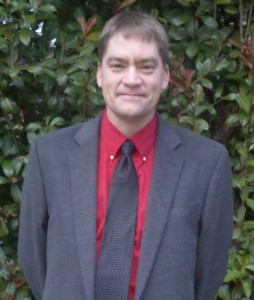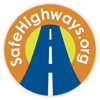Headlights On . . . Brian Purvis
Company: North Carolina Department of Transportation
Department: Traffic Systems Operations Unit
Position/Title: State Incident Management Engineer
Please describe your early aspirations/ career goals that led to your current role as NCDOT State Incident Management Engineer.
I always liked math and science in school and thought engineering would be a good career path. After doing everything from structural to roadway design, I got into traffic signal and ITS operations and did incident management as a sideline. I quickly found that growing up in a household with a father in car sales and a mother in retail better suited me for working out traffic and incident response issues.
How has your previous work in the transportation field influenced the IMAP Program?
It taught me that ITS is a very important tool, from detection and verification of incidents, measuring backups and delay to providing prompt and accurate traveler information. The goal is incident management. Responder safety, quick clearance and good communication protocols, along with efficient use of ITS and traveler information are all key to a successful program, and a safe and efficient road system.
When managing the IMAP program, what different business models do you consider?
We typically look at the model of our State Highway Patrol. They have been in existence since 1929 and we have come a long way by utilizing their template for success, from how we standardize our equipment to how we communicate internally and with other agencies. We also collaborate with our peers through partnerships developed through FHWA, the I-95 Corridor Coalition, NTIMC and many others.
NCDOT recently expanded IMAP’s coverage area, how did you determine these routes needed to be added to the patrol route?
As with any program in state government, it boils down to benefit/cost. We looked at the proposed routes and analyzed the amounts of accidents that occurred over a year, looked at the costs to the motoring public in delay costs and then justified the program with the cost of delay benefit by adding the IMAP routes versus the cost to operate the added routes. This is a conservative approach since it does not take into account all of the added benefits that IMAP provides, such as assisting motorists, clearing debris, providing traffic control and incident scenes, etc., all duties that reduce the amount of congestion and secondary wrecks that occur on our roadways.
By adding this extra coverage, what does NCDOT hope to accomplish?
Most of the added routes are in areas outside of urban areas of the state. By adding these patrols, along with some weekend routes in some urban areas, we expect to make a positive impact on areas of the state where accidents are less frequent, but typically more severe due to higher travel speeds, higher truck traffic, emergency resources being spaced further apart and lower capacity alternate and detour routes being available. These more rural interstates are the lifelines between our major urban areas. By adding IMAP, these routes will become more reliable and safer for both moving motorists and commerce around our state.
Did the additional coverage require NCDOT to hire more IMAP operators? If so, when hiring new operators what do you view as the most important qualities and skills required for an IMAP operator? If not, how does NCDOT plan to ensure coverage on these additional roadways?
The additional routes will require hiring and training additional IMAP operators. These are very specialized individuals. They must be courteous since they deal directly with the traveling public. They must be trustworthy since they are responsible for expensive equipment, coordinating with other agencies and directly representing our agency in a very public way. They must be skilled since they are dealing with a variety of tasks, such as radio communications, traffic control, vehicle operations and repair and safe removal of vehicles and debris from the roadway. Most of all, they must be brave. Dealing with live traffic in an unpredictable manner on a daily basis requires us to hire only the best, most dependable and most dedicated individuals around.
What type of training do the NCDOT IMAP drivers undergo?
We have everything from defensive driving techniques to proper methods for parking at incident scenes, providing traffic control and clearing incidents from the roadway. A lot of time is spent with on-the-job training since only part of what a driver is expected to see can be replicated in a contained environment. We have a formal training track at our Charlotte facility and have recently set up a similar facility at our Greensboro TMC. We also have a good partner in the Highway Patrol that trains and works with us at their training facility in Raleigh.
What other types of changes and improvements have you made to the IMAP program over the years to ensure safety remains the first priority on North Carolina’s highways?
First, we have standardized our equipment. This has made it far easier to train and equip our IMAP drivers and has also benefited by lower costs and coordination issues with our Equipment Unit that builds and outfits our trucks. Push bumpers, winches and other equipment are on every new vehicle, which raises our standards for response and clearance across the state. Second, we are adding red lights and reflective stripping to the backs of our IMAP trucks. NFPA 1901 recently required stripping on all new fire trucks last year. Since we typically block their response vehicles at incident scenes, we took the stance that the same standard could be incorporated into our fleet, so that the motorist’s perspective when approaching an incident would be the same. Finally, we are currently working on adding a statewide 800MHz interoperable radio system in all of our Traffic Management Centers and IMAP units. Since our TMC and IMAP units are managed out of regional offices, it is imperative that we have a robust system that allows us to communicate and coordinate across boundaries.
How do you envision the program will change over the next decade?
I predict Incident Management and ITS will become more prominent as traffic demands continue to grow. Squeezing every ounce of efficiency and safety from our existing infrastructure will make coordination and cooperation at incident scenes a necessity. Technology will continue to play a major roll also, as better methods of measuring traffic, detecting incidents and alerting motorists becomes available.
Please share an anecdote of a great assist or tale of a driver that went “above and beyond the call of duty.”
One of my favorite stories involves a stranded on I-440 in Raleigh back in July of 2008. A grandmother, mother and two small children broke down on the shoulder of the interstate. AAA had been contacted, but our IMAP driver transported the mother and two girls to a nearby restaurant to wait away from the 100 degree heat and busy, fast moving traffic. Within five minutes, the disabled vehicle was struck by an errant motorist, crushing the back of the station wagon. What could have easily been a multiple fatality was reduced to a property damage incident, which was quickly cleared. Traffic impacts were minimized but, more importantly, lives were saved. This is just one example of the 65,000 stops that our IMAP units make on a regular basis; all contributing to making our roadways safer and more efficient for both emergency responders and the traveling public that we all serve.
What types of valuable information have you gained by collaborating with Safety Service Patrols in other states?
By working with other states, sharing information at conferences and working together on projects with FHWA, the I-95 Corridor Coalition, AASHTO, the National Traffic Incident Management Coalition and many others, we have been able to both share and gain knowledge and experiences that would have taken us years longer to obtain on our own. The best practices, procedures and other valuable information gained by collaboration between states have moved Incident Management programs light years forward. Looking at initiatives such as Quick Clearance Programs, Instant Towing, Move Over and Fender Bender laws and sharing implementation strategies makes our industry much more efficient in getting needed policy changes and in getting programs realized.
What do you find is the best vehicle for communication between states’ Safety Service Patrols (presentations, conferences, conference calls, newsletters, websites, etc.)?
Most of our information comes from either collaborating at conferences or in working on mutual, multi-state initiatives. Nothing beats having face-to-face meetings to brainstorm on initiatives and projects.
What would you like other states who you have previously not communicated with to know about IMAP?
That we can’t do it alone. Partnering with other agencies has been critical to our success.
What would you like to know about other state’s safety service patrols?
The most beneficial information for us currently is how to both maintain and expand your program in this economy.
